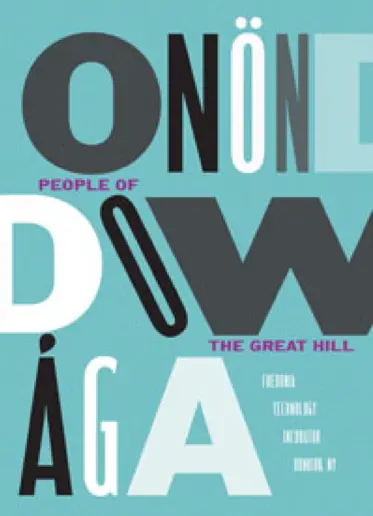



Creativity, craftsmanship and heroism of the Seneca Nation will be celebrated in “Onöndowa’ga: People of the Great Hill,” a new exhibition at the Fredonia Technology Incubator, 214 Central Ave., Dunkirk, that will be unveiled on Monday, Oct. 23.
Area residents will have an opportunity to meet the artists at an opening reception in the incubator’s gallery on Wednesday, Oct. 25, 4 to 7 p.m. Registration for the reception, which is free, is encouraged, and can be arranged online and also available on the incubator homepage.
“We are pleased to host this exhibition here at the incubator,” said Chuck Cornell, incubator director. “These exhibitions and accompanying receptions provide a great opportunity for artists, students, faculty, entrepreneurs and community to enjoy the work of artisans and network.”
The exhibition, made possible with the support of the John R. Oishei Foundation, was installed by Cathy and Jesse Marion Art Gallery Director Barbara Räcker, who oversees the incubator’s gallery. The exhibit will continue through Dec. 8. The gallery is open Monday through Friday, 9 a.m. to 4 p.m.
Participating artists include:
Mary Jacobs (Seneca, Turtle clan), who learned beadwork from her grandmother and local elders. Flowers, birds and vines feature prominently in her work, reinterpreted anew in vibrant color and layered glass. “My beadwork has evolved over the years from simple daisy chains to raised work collars and cuffs,” Ms. Jacobs explained.
Jacobs works with glass, stone and seed beads applied to cloth or leather to create traditional Seneca clothing and accessories. She has exhibited her work at the Seneca Nation Fall Festival Art Show at the Burchfield Nature and Art Center, the University of Alberta, Thunder Bay Art Gallery and Fenimore Art Museum.
Samantha Jacobs (Seneca, Turtle clan), daughter of Mary Jacobs, creates beadwork, corn husk dolls and traditional moccasins and dresses. “No matter what the subject of a piece deals with, whether it’s a random flower or a leaf that caught my eye, or a particularly interesting story I heard along my travels, my completed work is always about storytelling.”
Ms. Jacobs has exhibited her work and presented demonstrations at the Seneca Iroquois National Museum, Burchfield Nature and Art Center, University of Alberta, Thunder Bay Art Gallery and Auburn Museum, among other venues.
Peter B. Jones, a renowned potter and sculptor, studied under Hopi artist Otellie Loloma while attending the Institute of American Indian Art in New Mexico. His pottery, which is derived from traditional Haudenosaunee pit firing, hand-built coiling and slab construction, is admired and collected by community members, Native American art collectors and museums throughout the United States and other countries.
Jones’ art directly reflects the issues that have impacted the Haudenosaunee. He is also known for incorporating what he calls “Indian humor” into some of his pieces. His works have won numerous awards and are on exhibit at the Institute of American Indian Art in Santa Fe, N.M.; the Heard Museum in Phoenix, Ariz., and the Museum of Anthropology in Frankfurt, Germany. Jones has been a potter and sculptor for more than 50 years.
Penny Minner (Seneca, Turtle clan) is a graphic artist and fourth-generation traditional corn husk doll and basket maker. She received an associate degree from Ray College of Design in Schaumburg, Ill., and is currently working on her bachelor’s degree in Graphic Design at the Art Institute of Pittsburgh. She learned basket making, done in a traditional method by hand, from a cousin. Baskets by Ms. Minner are created by hand in a traditional method.
Carson Waterman (Seneca, Snipe clan) grew up on the Cattaraugus Territory of the Seneca Nation. After graduating from Gowanda High School and serving in the Vietnam War, he attended the Cooper School of Art in Cleveland, Ohio, and become an instructor at the Cleveland Museum of Art. Mr. Waterman later interned at the Smithsonian Institution in Washington, D.C., and the New York State Museum in Albany, where he specialized in model-making and exhibit preparation.
Waterman became the primary exhibit manager, illustrator and artist for the newly established Seneca-Iroquois National Museum, located in Salamanca on the Allegany Reservation of the Seneca Nation. He has been self-employed as an artist at his gallery on the Allegany Territory since 1988.
Waterman’s artwork is a deep reflection on his Seneca heritage. His paintings draw upon the relationships between Mother Earth and all living things, which are critical to the underlying traditional Seneca spiritual beliefs found in the Gaiwiio (“the Good World”). Through his art, Waterman seeks to embody the richness and beauty of the Seneca and other Haudenosaunee Peoples that are unique to the northeastern United States.
The Smithsonian Institution, the Museum of the American Indian, the New York and Tennessee state museums, the Ganondagan Historical Site in Victor, N.Y., the Seneca-Iroquois National Museum, as well as numerous other university and private museums and galleries throughout the Northeast, have displayed Waterman’s artwork.
The Haudenosaunee (People of the Long House) include Six Nations: the Mohawks, Oneidas, Onondagas, Cayugas, Senecas and the Tuscaroras, who migrated into Haudenosaunee country in the early 18th century.